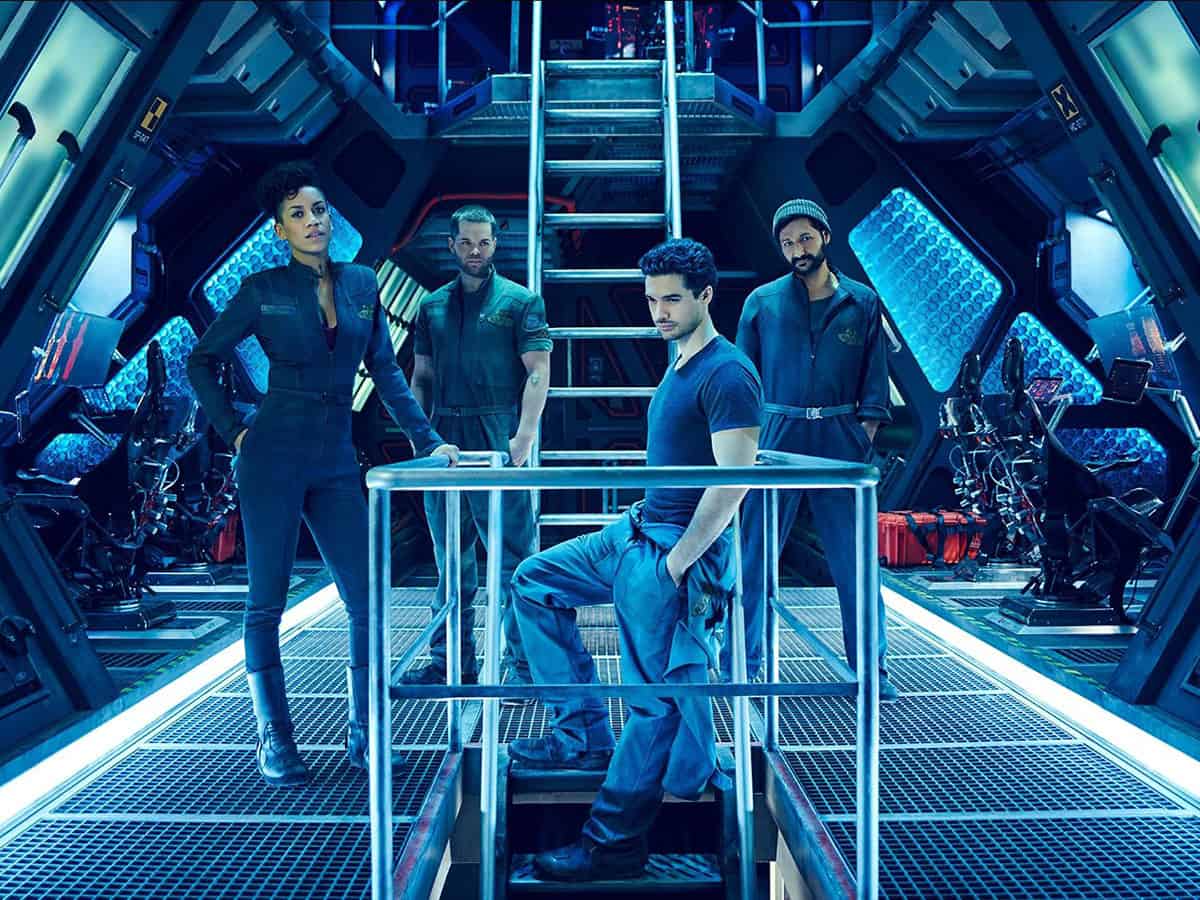As the name suggests, science-fiction movies are just that – fiction. Unfortunately, that sometimes means the science is too. Rhett Allain examines some concepts that sci-fi movies regularly get wrong
Whether they’re about space travel, superheroes, aliens, sentient robots or all the above and beyond, science-fiction movies are more popular than ever. Indeed, six out of the top 10 grossing films of 2018 were part of the sci-fi genre, including Avengers: Infinity War, Ant-Man and the Wasp, and Solo: a Star Wars Story.
But let’s be clear – even though these movies involve some element of science, they are still fiction, and their sole purpose is to entertain. So despite the best efforts of science advisers (see “Turning science into movie magic”), the science in the films is sometimes questionable. You’ll have your own favourite examples of “bad movie science”, but let’s look at three concepts that regularly put the fiction into science fiction.
Airlocks and gravity
Imagine the following scene (or remember WALL-E (2008) or Sunshine (2007) if you prefer). An astronaut is floating in space. Far from a planet or star, our hero pries open the airlock of a spacecraft before going inside. The outer door shuts, and the isolated chamber fills with air. Then, as if by magic, the astronaut suddenly falls to the ship’s floor seemingly under the influence of gravity.
Unless the ship has some futuristic gravity-inducing technology – like in the Star Trek (1966–present) and Star Wars (1977–present) franchises – the implication in these scenes is that because space has neither gravity nor air, the presence of air in the spacecraft means gravity kicks in.
Nope. That’s not how it works.
Gravity is an interaction between any two objects with mass, and it is so weak that you would never notice the force between any two normal sized objects. However, if one of the interacting masses is huge – and sci-fi movies just love massive asteroids, planets and black holes – then the gravitational force is noticeable. That means that there is indeed gravity in space, depending on where you are in relation to big objects. It’s why the Earth moves around the Sun even though there is no air out there.
So, for our astronaut in deep space, even after the airlock chamber is up to pressure, they should still be floating around.
It’s a bit different if the spaceship is in low orbit around a huge object – like the International Space Station (ISS) circling the Earth. Astronauts on the ISS only appear to be without gravity because of the orbital motion of the space station. The ISS is accelerating as it moves in a circular path around the Earth, but since the humans inside are experiencing the same acceleration as the ISS (due to the gravitational interaction), they “feel” weightless. The same thing can happen on the surface of the Earth – there are many popular amusement-park rides that place you in a free-falling seat. For the short moment that both the ride and the humans have the same free-fall acceleration, the humans will be “weightless”.

There’s an obvious reason why moviemakers use the misconception that the presence of air in a spaceship means gravity – it’s much easier to film. On Earth, creating weightless scenes is hard. One option is to send your star actors (or doubles) onto a plane and get the pilots to perform a parabolic manoeuvre, which is how scenes in the 1995 movie Apollo 13 were filmed. Other tactics are to move actors around with complex string systems that get edited out, or to film underwater – both of which were put into effect for Gravity (2013). You could also use computer animations to simulate weightlessness. But given the complexities of each of these methods, it’s easier for movie directors to have the actors move around with gravity instead of bothering with those fancy special-effect tricks. So, when the air gets pumped back into an airlock, this makes an easy transition point for movie-makers to have characters go from “floating around” in space to being in a space ship.
One movie that gets the science right with airlocks is 2001: A Space Odyssey (1968) (see “Douglas Trumbull: a mutual appreciation between scientists and moviemakers”, Nov 2019). The lead character, a scientist called David Bowman, is in a small spacepod and he needs to get back into the large spacecraft Discovery One. Unfortunately, he’s left his spacesuit helmet behind during his travels and the computer (HAL) doesn’t want to let him back in. In a daring move, Bowman opens the spacepod door and shoots himself into an empty airlock – in which he (correctly) bounces around even as you can hear the air hissing back in.
Movies like Interstellar (2014) and The Martian (2015) go down the artificial-gravity route for their spaceships, but induce it in a scientifically realistic way, rather than using some mysterious futuristic technology off-screen. In these films, the astronauts experience a normal Earth-like gravity due to the rotation of the spaceship. By standing on the inside of a rotating object, the floor will have to push on the humans in order to make them move in a circle. If this force from the rotating floor has the same magnitude as the force the ground on Earth pushes back with, an astronaut would feel the effects of artificial gravity. This isn’t science fiction, but actual science.
Spacecraft and thrusters
As well as featuring airlocks, just about every science-fiction movie that takes place in space will have an obligatory scene where a big and ominous spaceship is seen travelling steadily through the void with a deep rumble. The noise is the first error as sound obviously can’t travel in a vacuum. But as the spaceship passes the “camera”, it gets worse. Viewers glimpse massive engines glowing from the use of thrusters that are apparently pushing the ship forward. Newton’s second law of motion says no. Forces don’t make things move – forces make things change speed.
On Earth, if you wanted to push an object across a table, say, at constant speed, you’d obviously need to apply a constant force to overcome the friction between the surface and the object, and the air resistance. When travelling through the vacuum of space, however, these opposing forces are not present. You only need to apply an initial force to accelerate into motion, change direction, speed up or slow down. For a starship travelling at a constant speed, it wouldn’t need the thrusters on at all.
So why do so many movies get this simple fact wrong? The fault lies with our everyday experience of moving objects over surfaces, which wrongly implies that you need a constant force to move them at a constant speed. It’s only when you consider the invisible frictional force that you realize why that’s not true.

Of course, not every sci-fi show gets this fact wrong. My favourite example is not a movie but the Syfy and Prime Video TV series The Expanse (2015 – present). This show takes place mostly in our own solar system using spacecraft that are pretty plausible. The vehicles move around using thrusters – but they don’t travel at a constant speed. Instead, the thrusters make the spacecraft accelerate and speed up. Then, when the starship is halfway to its destination, it flips around and uses the thrusters to slow down.

VFX in movies: from weightlessness to curly hair
The show also uses these thrusters for artificial gravity. Since the spacecraft is accelerating, the people inside also need to accelerate. And in order for a human to accelerate, that human would need a net force. This net pushing force comes from the floor in the interior of the ship. It can be very similar to the force of the ground pushing on you now (assuming you are on Earth) such that it feels like gravity.
The biggest downside to using more plausible physics when portraying space travel is that the ships might then move in a way that will strike viewers as odd, unrealistic and unexpected. Not having ever travelled in space, most of us simply don’t have an intuition for how things would behave out there.
Massive and moving
Sci-fi films aren’t just set in space – sometimes a plot will unfold right here on the surface of the Earth. But still, it needs to be exciting and different in some way, and what better way to do that than to throw in huge robots, machines or monsters.
Take the Pacific Rim movies (2013 and 2018), which feature gigantic humanoid machines known as Jaegers, controlled by two or three co-pilots. Deployed to battle Godzilla-like monsters from an interdimensional portal, these machines are about 75–100 m tall. The question is, though, how would something this big move?
Well, imagine throwing a tennis ball vertically upwards to a certain height, h. Simple Newtonian mechanics says that the time for the ball to fall back down into your hand is t = 2(2h/g)1/2, where g is the acceleration due to gravity. So if you throw a ball up a metre, it takes about a second for the ball to go up and back down.

Now imagine a giant 100 m Jaeger fighting a huge monster. If, in the course of the struggle, the robot takes a huge 20 m jump (just 20% the height of the robot) then, using the formula above, it’ll be off the ground for four seconds. That might not seem much, but in the world of films, it’s enough to turn a fast-paced action scene into a slow-motion ballet. To keep the movie magic, filmmakers tend to bend the laws of physics and speed up the robot’s movements – they make these giant humanoids move like normal humans, only bigger.
The same idea also works for things like punching. A human-sized arm can accelerate and move to a fully extended position in just a fraction of a second. So if you want a robot with an arm that is much larger to do the same motion in the same time, both the acceleration and velocity would have to be much higher.
Let’s say you have a human arm making a punching motion. As a rough estimate, this fist starts from rest and then moves a distance of about 50 cm (the length of an outstretched arm), and the whole punching motion takes under 0.1 s to complete. During this time, the fist accelerates up to speed and then slows down to stop. If the punching hand has a constant acceleration during the first half of the punch, basic kinematics says it would get up to a top speed of 5 m/s.
Now if you repeat this same calculation for a punch made by a giant 100 m-high robot, then – assuming it has the same proportions as a normal human – its punch will extend over a distance of about 25 m. But in order for the punching robot to look like a fighting human, it would still need to complete the punch in a time of about 0.1 s. Using the same time with the larger distance gives a maximum punching speed of 250 m/s. Just for comparison, this robot punching speed is about the speed of a flying commercial airliner. Yes, super fast.
The physics also gets complicated when things get tiny. In the movie Ant-Man (2015) the hero, played by Paul Rudd, has the power to shrink down to less than 1 cm in height, which would make even running extremely hard. For each stride of his run, he would be off the ground for a very short period of time. Sure, he could run – but it certainly wouldn’t look like a normal human running.
Turning science to movie magic
You might think that none of the physics I’ve described in this article is particularly cutting-edge or advanced – and that by picking holes in movie plot lines I’m spoiling the drama of Hollywood blockbusters. To some extent, you’d be right. However, examining the scientific principles in sci-fi movies is a great way of getting school students and non-scientists interested in simple science. There are countless examples that you can use and there’s always a new movie around the corner. So next time you’re rolling your eyeballs at a film that mangles the science, go home, do a few back-of-the-envelope calculations and you’ve got a perfect talking point to reveal to others the beauty and wonder of science.




